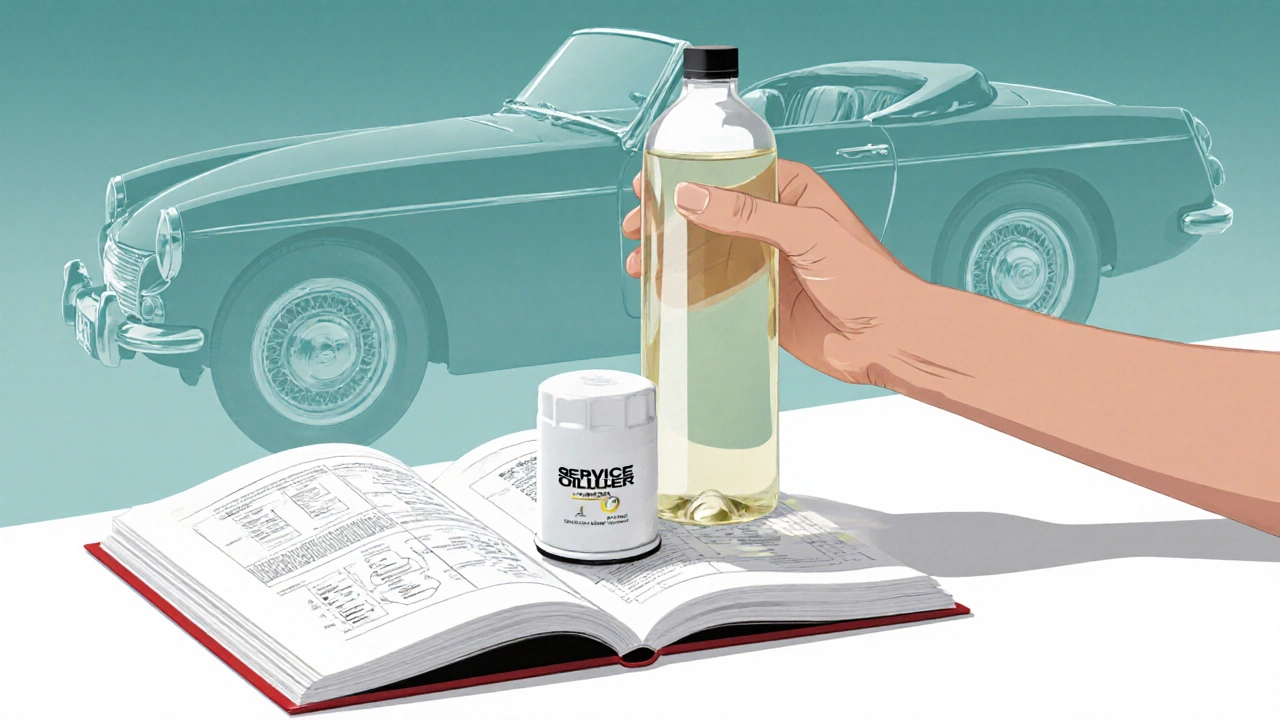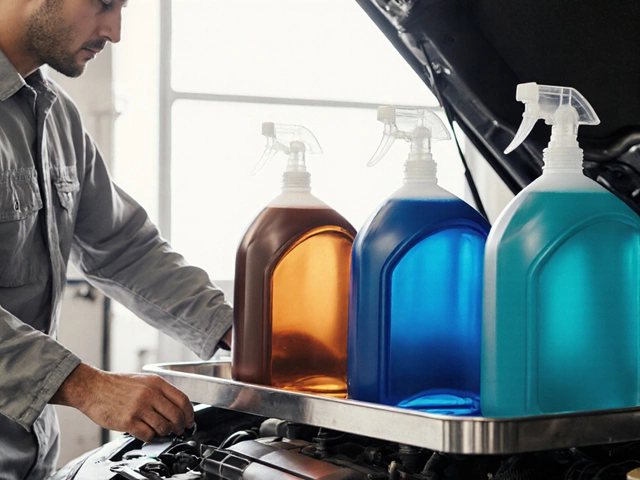You hear "full synthetic" everywhere-from ads to mechanics’ recommendations-but is it always the right pick for your motor? Knowing when full synthetic oil isn’t the best choice can save you money, protect older engines, and keep your warranty intact.
What is full synthetic oil?
Full synthetic oil is a lubricant engineered from chemically engineered base stocks, offering consistent molecular size, superior thermal stability, and low‑temperature flow compared to conventional mineral oils. It typically meets higher API (American Petroleum Institute) and ACEA (European Automobile Manufacturers Association) specifications, promising longer drain intervals and better engine protection under extreme conditions. While the benefits sound great, the formulation isn’t a universal fit.
Why full synthetic isn’t a one‑size‑fits‑all solution
Manufacturers design oil specifications for a range of engine designs, operating temperatures, and tolerances. When an oil’s properties stray too far from what a particular engine expects, you can encounter seal leaks, oil pressure anomalies, or even increased wear. Below are the most common scenarios where you should think twice before reaching for full synthetic.
1. Very high‑mileage or worn‑out engines
Engines that have logged well over 100,000 miles often develop tiny clearances between pistons, rings, and cylinder walls. Conventional or high‑mileage oils contain additives that swell seals slightly, helping to reduce oil consumption and minor leaks. Full synthetic oils, being more chemically “clean,” may not provide enough seal conditioning, leading to increased oil burn‑off.
- Older British diesels (e.g., pre‑2000 Land Rover Td5) often benefit from high‑mileage mineral blends.
- If you notice a sudden rise in oil consumption after switching to synthetic, revert to a high‑mileage formulation.
2. Engines that have never run on synthetic before
Some manufacturers advise a break‑in period using the oil type recommended at launch. Switching abruptly can cause sudden changes in friction coefficients, potentially stressing piston rings. A gradual transition-mixing a small percentage of synthetic with conventional oil over several change cycles-helps the engine adapt.
3. Diesel engines with specific oil spec requirements
Many modern diesel engines, especially those equipped with particulate filters (DPF) or exhaust gas recirculation (EGR), require oils that meet particular ACEA C or API CJ‑4 standards. Not every full synthetic meets these criteria. Using a generic synthetic that lacks the necessary anti‑wear and soot‑handling additives can accelerate DPF clogging or wear turbocharger bearings.
4. High‑performance turbocharged or supercharged engines in extreme heat
While full synthetics handle heat well, some high‑output engines are tuned for oils with specific viscosity grades (e.g., 5W‑30 versus 0W‑40). An overly thin synthetic in a scorching summer might not maintain sufficient film strength, risking metal‑to‑metal contact at high boost pressures.
- Japanese performance cars (e.g., Nissan GT‑R) often list a specific synthetic blend for track use.
- Check the manufacturer’s recommended viscosity for your turbo model before choosing a 0W‑20 full synthetic.
5. Very cold climates
Full synthetics maintain flow at low temperatures, but some low‑viscosity grades (0W‑20) can become too thin in sub‑zero conditions, reducing oil pressure during start‑up. In regions where temperatures regularly dip below ‑20 °C, a slightly thicker conventional oil (e.g., 5W‑30) may provide better pump priming.

6. Vehicles still under manufacturer warranty
Warranty terms often stipulate that you use oil meeting the exact specification written on the service booklet. If the spec calls for a conventional oil with a specific API rating, switching to a full synthetic that doesn’t list that rating could void coverage in case of an engine failure.
7. Cost‑sensitive owners with modest driving needs
Full synthetics command a premium-often 30‑50 % more per litre. If you drive mostly short city trips, change oil every 5,000 km, and your car’s mileage is moderate, a high‑quality synthetic blend offers most of the protection at a fraction of the price.
8. Classic or heritage cars
Restored vintage vehicles are usually built to the oil standards of their era. Using a modern synthetic can change the way oil circulates through older, looser tolerances, potentially leading to leaks or uneven wear. Original mineral oil, or a specially formulated classic‑car synthetic, is the safe bet.
Key factors to evaluate before picking oil
- Manufacturer recommendation: Always start with the oil spec printed on the dipstick or owners’ manual.
- API/ACEA rating: Ensure the oil meets the required rating (e.g., API SN, ACEA A3/B4).
- Viscosity grade: Match the grade (e.g., 5W‑30) to your climate and engine design.
- Engine mileage: High‑mileage engines may need seal‑conditioners found in conventional/high‑mileage blends.
- Driving style: Heavy towing or frequent high‑rpm driving can justify a full synthetic.
- Fuel type: Diesel engines often have stricter oil spec needs than gasoline units.
- Warranty status: Verify that the oil you choose is covered under the warranty terms.
Practical checklist before your next oil change
- Read the vehicle’s service booklet for the exact oil spec.
- Look at the oil’s API and ACEA markings-match them exactly.
- Consider the car’s age and mileage; opt for a high‑mileage blend if >100k km.
- Check your climate’s low‑temperature rating; choose a viscosity that stays fluid at your winter lows.
- If you own a diesel with a DPF, confirm the oil is CJ‑4 or ACEA C‑type.
- Factor in cost-full synthetic is worth it only if you’ll reap the extended drain interval or performance benefit.
- When in doubt, consult a certified mechanic familiar with your model.
Comparison table: Full Synthetic vs. Synthetic Blend vs. Conventional
| Attribute | Full Synthetic | Synthetic Blend | Conventional |
|---|---|---|---|
| Base stock purity | ≥ 95 % engineered molecules | ≈ 30‑50 % synthetic, rest mineral | 100 % refined mineral oil |
| Typical cost (per litre) | £8‑£12 | £5‑£7 | £3‑£5 |
| Recommended service interval | 12 000‑20 000 km | 8 000‑12 000 km | 5 000‑8 000 km |
| Best for high‑temperature engines | ✓ | ✓ (limited) | ✗ |
| Seal conditioning for high‑mileage | ✗ (may lack additive package) | ✓ (often contains seal‑restore additives) | ✓ |
| Cold‑start flow in sub‑zero | ✓ (especially low‑visc grades) | ✓ | ✗ (can thicken) |
| Warranty compliance | Only if spec matches | Only if spec matches | Typically matches original spec |

Common pitfalls and how to avoid them
Even seasoned DIYers slip up. Here are three frequent mistakes and quick fixes:
- Using the wrong viscosity: Always verify the “W‑XX” rating matches the climate chart in your owner’s manual.
- Mixing oil types: If you accidentally pour synthetic on top of mineral oil, the blend can degrade. Drain and refill with a single, correct oil.
- Ignoring oil filter compatibility: Some high‑performance synthetic filters have tighter media; using a cheap filter can limit flow. Pair the oil with the recommended filter type.
Bottom line: Choose the right oil for your engine, not the flashiest label
Full synthetic oil shines in modern engines that run hot, see long service intervals, and demand top‑tier protection. Yet for a 20‑year‑old high‑mileage sedan, a diesel that still uses a CJ‑4 mineral blend, or a classic British roadster, the safest, most economical route might be a conventional or high‑mileage blend.
Before you buy, ask yourself the questions in the checklist, compare the specs in the table, and consult your vehicle’s warranty booklet. The right oil choice keeps the engine humming and your wallet happy.
Can I switch to full synthetic oil mid‑service?
Yes, but it’s best to do a full oil change rather than topping up. Mixing large quantities can cause additive incompatibility, especially in older engines.
What API rating should I look for in a full synthetic?
Match the rating your maker lists, such as API SN, SP, or SM for gasoline engines, and CJ‑4 or CK‑4 for diesels. Any higher rating is generally compatible.
Will a full synthetic oil improve fuel economy?
The gain is modest-typically 1‑2 %-and only noticeable if you switch from a very old mineral oil to a low‑viscosity synthetic.
Is there a risk of oil leaks when using full synthetic?
Synthetic oil can clean away deposits that were sealing tiny gaps, revealing pre‑existing leaks. If you notice new drips after a switch, check gaskets and consider a high‑mileage blend.
Do I need a special oil filter for full synthetic oil?
Most standard filters work fine, but high‑performance engines often use low‑restriction filters that match the oil’s flow characteristics. Follow the manufacturer’s recommendation.
